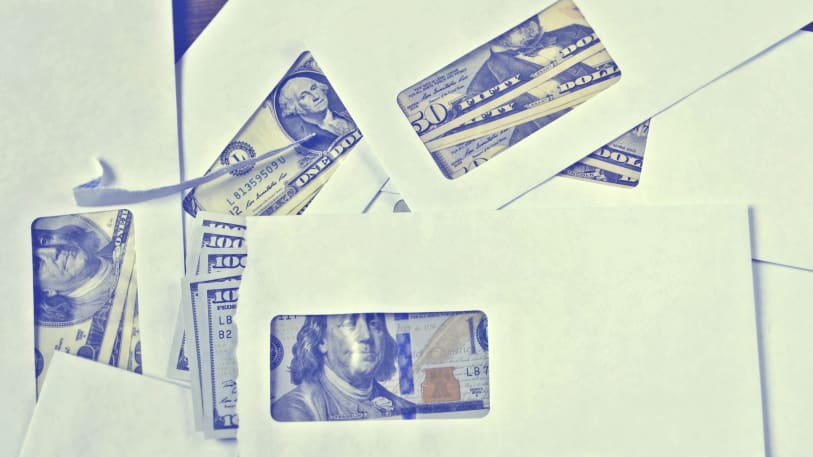How I Managed To Save Money On A $25,000 Salary In New York City
I paused while filing my taxes this year to peek at my returns from years past. My 2012 filing in particular left me almost speechless: I’d only grossed $ 23,244.
This is my sixth year living in New York City, and it’s already easy to forget how much of a financial struggle it was to scrape by in the first and second year. In 2016, I grossed over four times what I did four years prior, so you can imagine my surprise at realizing that I’d not only managed to survive on such a small entry-level salary, but had also put away some money in the process.
How did I do it? It’s not exactly a sexy story with an epic twist, but here goes.
Setting Goals From The Outset
For starters, it’s important to share a little about my overall financial picture: I intentionally chose a college that offered me enough scholarship money to graduate debt free. But I’m also both privileged and grateful that my parents were able to cover the remaining 50% of tuition costs. So entering the job market without the crushing debt loads that so many others in my age group aren’t as fortunate to avoid was a huge help.
From that point forward, I established some clear goals right away. Financial goal setting is something I’ve always done, even as a little girl. I used to have a candy tin where I stashed what I earned from pet sitting the demonic cat that lived next door. I kept a notebook in there with a ledger of all the money I’d saved, along with a crude, childish drawing of a red Mitsubishi Eclipse—my then dream car.
This habit translated into wanting to graduate college debt free and then, later, to aggressively saving as an undergrad so I could eventually move to New York with a small nest egg. I worked throughout college and during my summers to meet that goal.
Then, as soon as I actually moved to New York, just three weeks after graduating, I set three new goals:
- Save $ 500 by May 2012 for travel purposes.
- Avoid credit card debt.
- Don’t touch the nest egg.
Here’s how I set about meeting all three of those goals, despite my meager salary:
1. I Budgeted Income From Working Three Jobs
I moved to New York to work as a page for the Late Show with David Letterman. While fun, it didn’t pay much above minimum wage and usually averaged out at 25–30 hours per week. Because Letterman filmed midday to early evening, I had to get creative about other jobs I could work to make up the difference. I ended up as a Starbucks barista most weekday mornings, plus some weekend evening shifts, and picked up some babysitting gigs for a few different families.
Thanks to tips from Starbucks and income from babysitting, I ended up with a decent amount of cash, so I started using the “envelope system” to keep a budget. You might have heard of this approach before. It’s a popular method that’s as simple as it sounds: You just store money in physical envelopes dedicated to spending categories. My envelopes were:
- Rent
- Money for Anna (in other words, utilities, which were in my roommate’s name)
- Fun stuff
- Savings
The “fun stuff” envelope usually stayed empty since I aggressively prioritized “savings” first. Because I often got paid in cash, I liked the tactile, visual practice of putting 50% of what I’d earn each payday into the “rent” envelope, 25% into “money for Anna,” and 25% into “savings.”
I now realize that I shouldn’t have been storing that much loose cash in my apartment, but fortunately nothing ever happened. I didn’t budget much for food—but we’ll get there.
2. I Accepted Leftovers And Tucked Away Unexpected Windfalls
“Windfalls” is a generous term, but every bit of unexpected income I received would go into my “savings” envelope. Usually these came in the form of tips, either from being a barista or babysitting. Upper East Side parents were quite generous tippers and occasionally paid my cab fare if they returned home after midnight. I’d pocket the additional $ 20 or so and hop on the subway to get home—no shame in that.
I also had no shame about snagging leftovers. I’ve eaten more Starbucks scones, pumpkin bread, “bistro boxes,” and paninis than you probably will in a lifetime. As a barista, I sometimes had the privilege of working the closing shift. This meant clearing out all the “expired food,” none of which had ever actually gone bad—it had just passed its sell-by date. After once watching a coworker stuff all this perfectly good food into a black trash bag and toss it outside, I asked if I could take some home. She shrugged and said she didn’t care.
That was all I needed to start stocking up on anything that would be getting thrown out. I started bringing tote bags to work during closing shift nights and going home with pastries, breakfast sandwiches, and paninis galore. My freezer got stacked with meals, which shrunk my grocery bill and helped add more to my “savings” envelope.
Today, the fact that my heart didn’t explode from the sodium intake is nothing short of miraculous.
3. I Very Selectively Said “Yes” And Sought Out Free Fun
That’s basically just a nice way of describing how I said “no”—a lot. And truthfully, this strategy became more about saying no more often than I’d even have liked. Earning $ 23,000 a year meant I had to be extremely judicious about spending money.
Each invitation to a brunch, happy hour, a friend’s improv show (it was my first year out of college after all), the movies, or even thrift-store shopping all demanded careful evaluation—and not only in terms of how much it might cost me, but how much I stood to lose in income by doing something fun instead of working. Babysitting gigs were usually at night, and agreeing to a Friday night party could mean passing up $ 80 to $ 100 in pay.
Admittedly, I found that after saying “no” enough times, some people would eventually stop asking. So looking back, I’d advise anyone in a similar position to try and say “yes” sometimes, for the sake of preserving important relationships.
Still, this period of my life did make me a master of finding very frugal or free fun things to do, and it taught me how to counter a friend’s invitation with a cheaper alternative. These are actually now some of my fondest memories from those early years. For instance, I figured out how to see off-Broadway shows for free (volunteer to usher) and participated in Improv Everywhere’s “MP3 Experiment.” I also routinely scored $ 30 rush tickets to Broadway plays, found free tours of iconic New York City landmarks, and after realizing that several museums were donation-based, stopped paying $ 20–$ 25 for entry (those that weren’t usually had free admission hours once a week). I also just took time to get lost walking around new neighborhoods.
Whenever a friend invited me to an expensive, boozy brunch, I’d say “yes” on occasion, but often countered with a more budget-friendly option. This tactic usually worked quite well, but I shrugged it off and didn’t hold any resentments if my friend wanted to stick to her original plan.
These days, I’m still an aggressive saver, but there’s far more flexibility in my budget. I’ve hung onto that “savings” envelope as a reminder of what I managed to accomplish in my early adult life. From time to time I’ll look at it and reflect on the cuts I was willing to make in the short term for a long-term financial gain.
But sometimes I just look at it to remember how painful it can be to make ends meet as just one person, even without any debt and subsequently in a very privileged position. And I’m reminded that not everyone is so lucky.
Erin Lowry is a personal finance expert, speaker, and the author of Broke Millennial: Stop Scraping By and Get Your Financial Life Together, an essential roadmap for going from flat-broke to financial badass.
(60)














